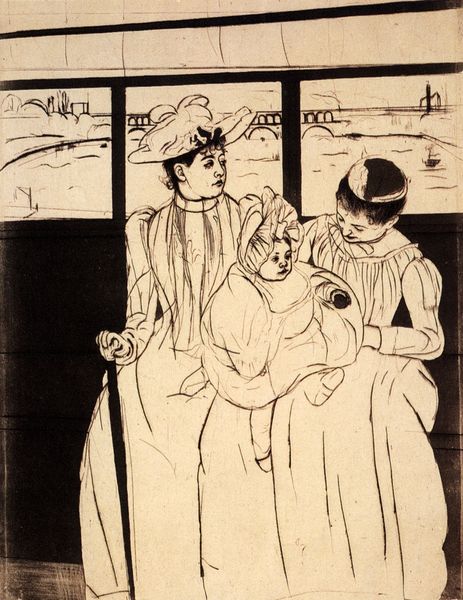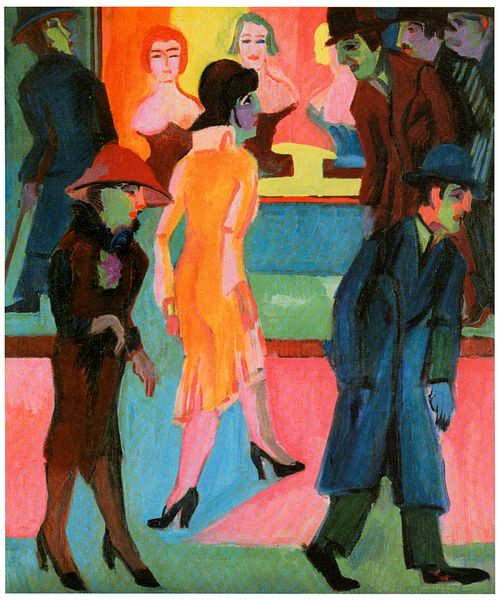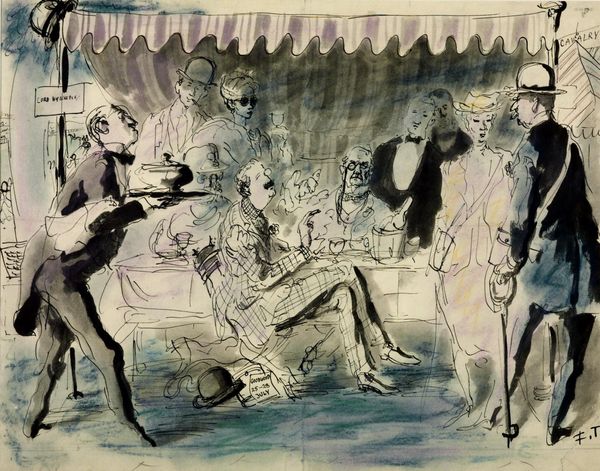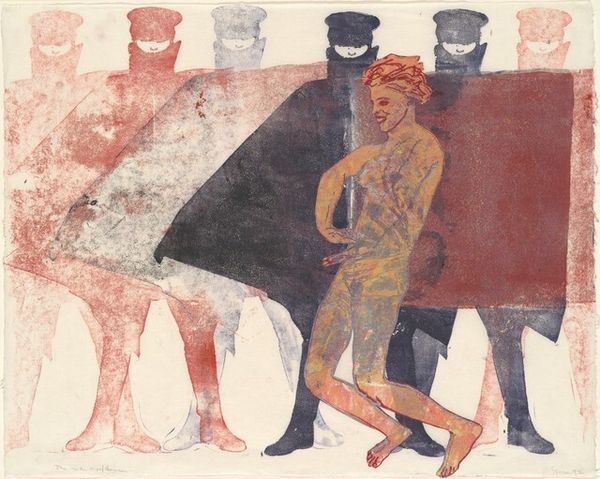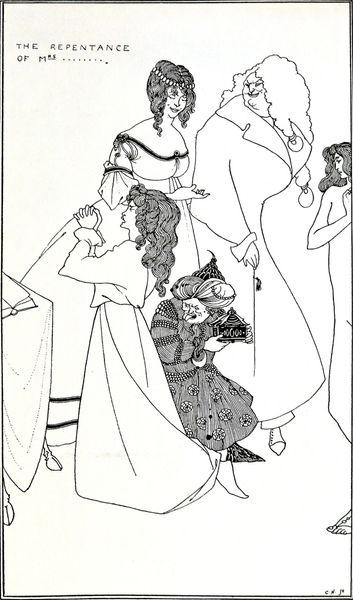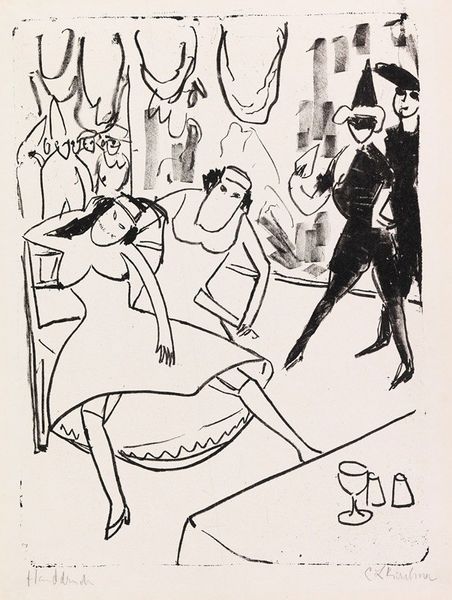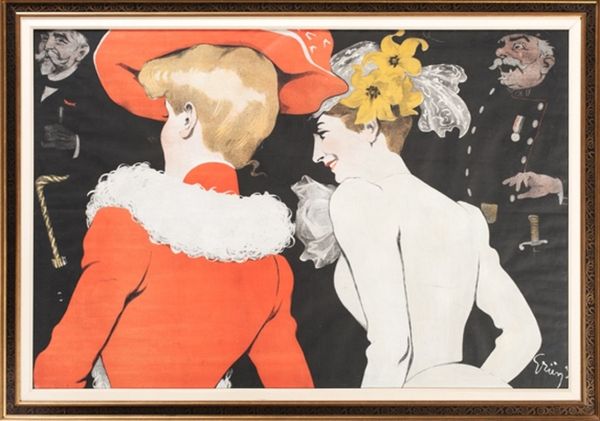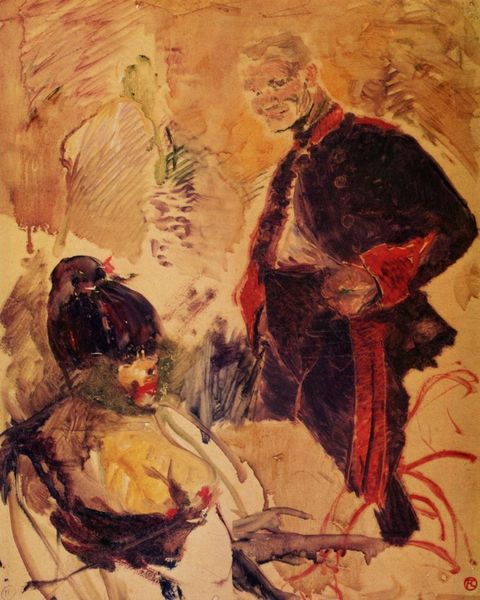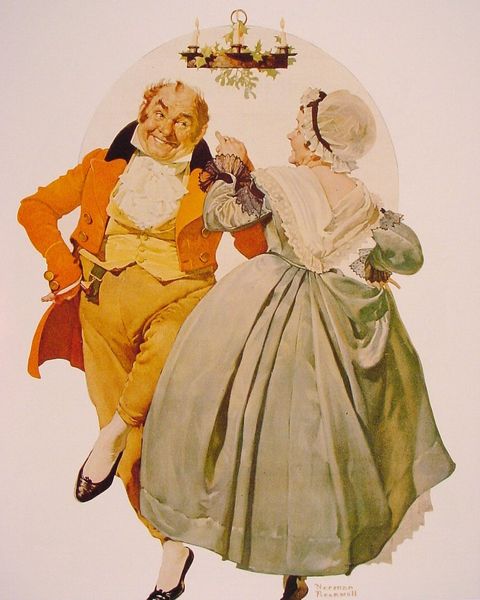
drawing, lithograph, print, poster
#
portrait
#
drawing
#
lithograph
# print
#
impressionism
#
graffiti art
#
figuration
#
naive art
#
symbolism
#
cityscape
#
poster
Copyright: Public domain
Curator: This lithograph print is entitled "Asche." Though undated, it's by the Swiss-born French artist Théophile Alexandre Steinlen. Its dominant colors are shades of brown, black, and touches of white. Editor: It strikes me as intensely melancholic. The figures seem trapped within a social artifice, a performance almost. There is such emotional constraint here. Curator: Let's consider Steinlen's technique. He utilized lithography, which allowed for mass production, situating his art within a broader culture of print and dissemination. Think about the access this granted working-class individuals who would never have stepped into a fine arts gallery! Editor: I'm drawn to the interplay of class and gender. Note the subtle power dynamic, perhaps even exploitation, embedded within this scene. These women, likely entertainers, are juxtaposed with a tailor meticulously altering garments, perhaps costumes. Are they being defined and refined, literally tailored to meet expectations of the male gaze? Curator: Absolutely. This image speaks volumes about the fashion industry as a powerful force and about the very hands engaged in creating these garments. There's the fabric itself. Think about sourcing of materials, dyes and the labour-intensive processes required. Steinlen's work subtly highlights those often-invisible chains of production and consumption. Editor: The averted gazes also reinforce this sense of disconnect and alienation. Notice how none of the figures truly engage with one another. They're present but somehow absent. The word 'Asche' in the work, means 'ashes', so perhaps Steinlen implies that he represents the dissipated dreams of women performing labor within a capitalist structure. Curator: Right. As we wrap up, let's remember Steinlen's mastery over the lithographic process. Editor: And how he subtly used it to comment on the complexities of his time, bringing together themes of identity, labor, and social constraint in ways that continue to resonate today.
Comments
No comments
Be the first to comment and join the conversation on the ultimate creative platform.

